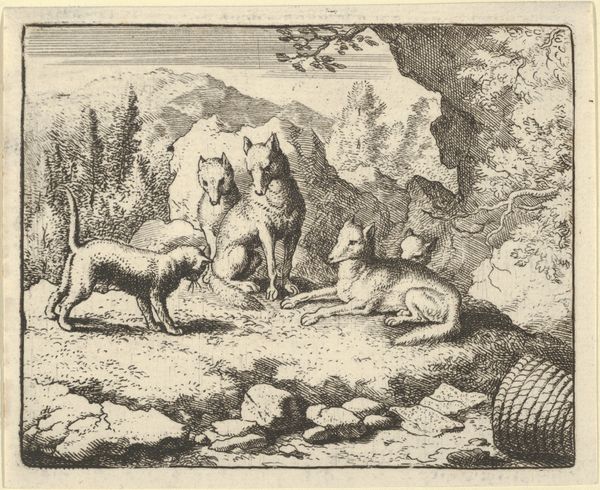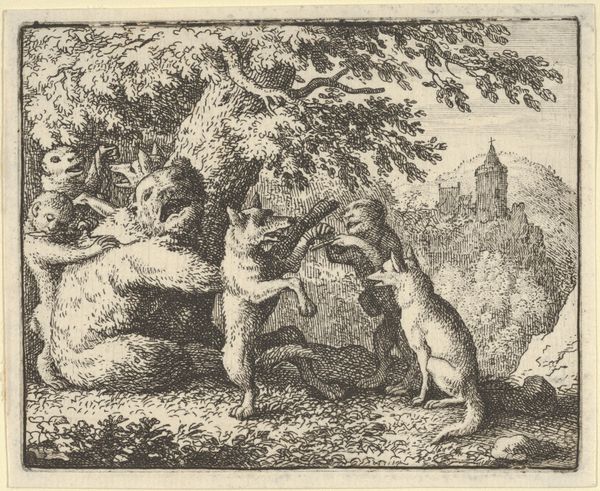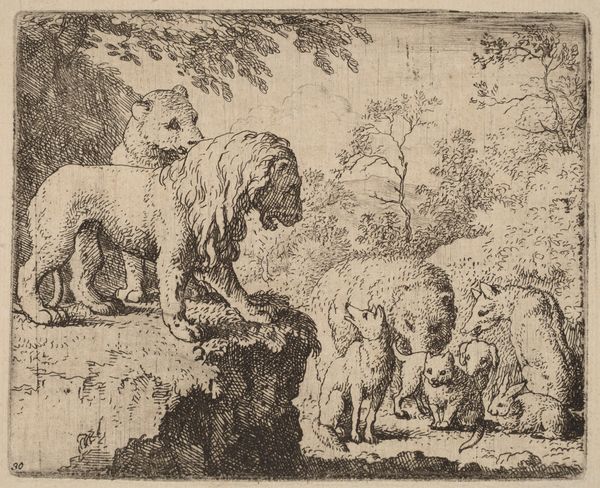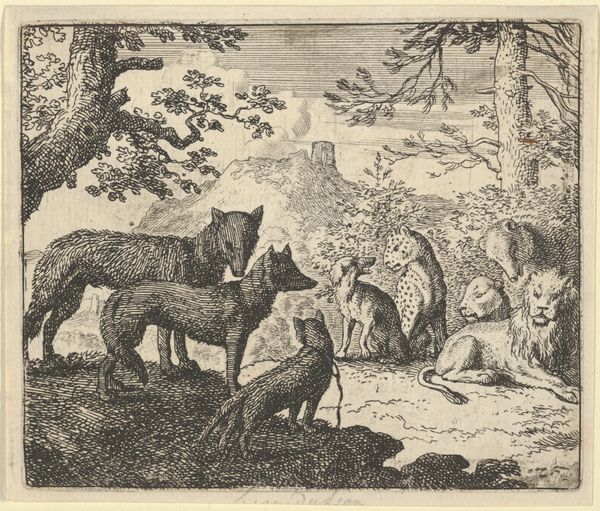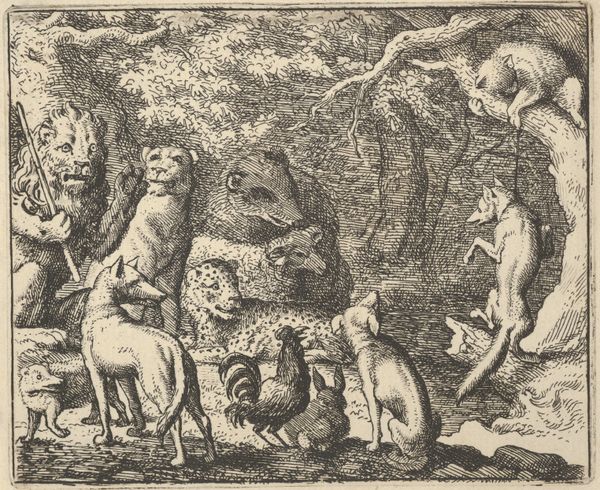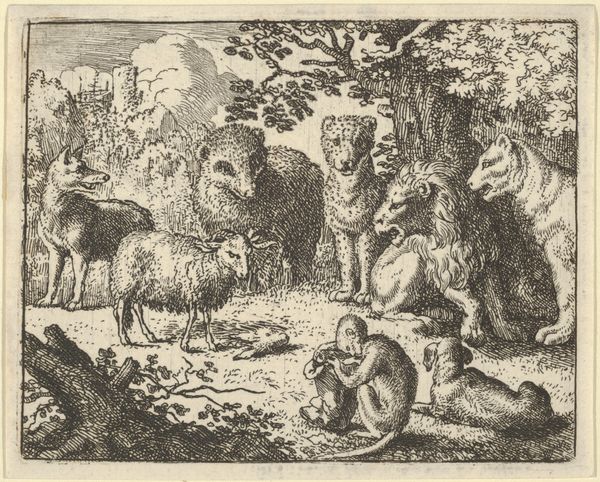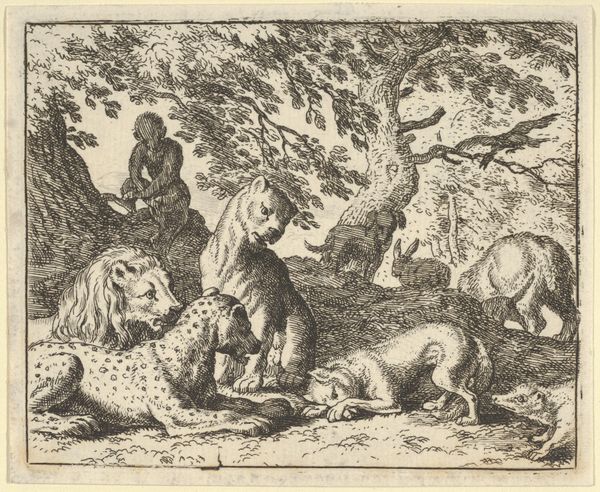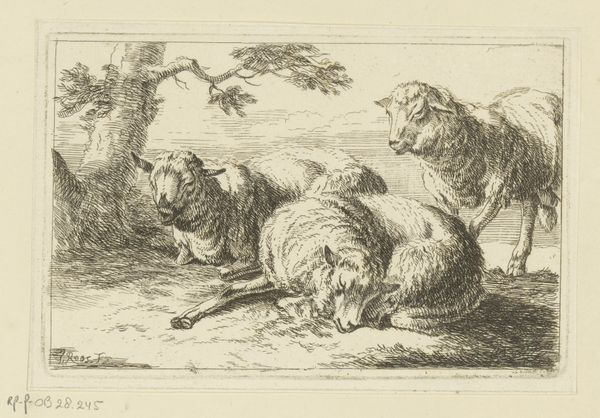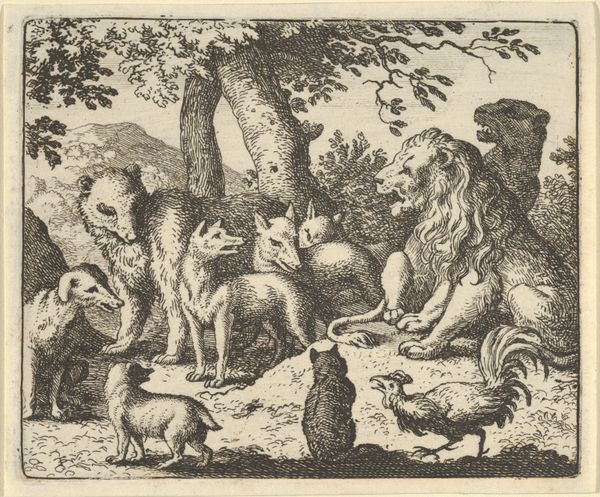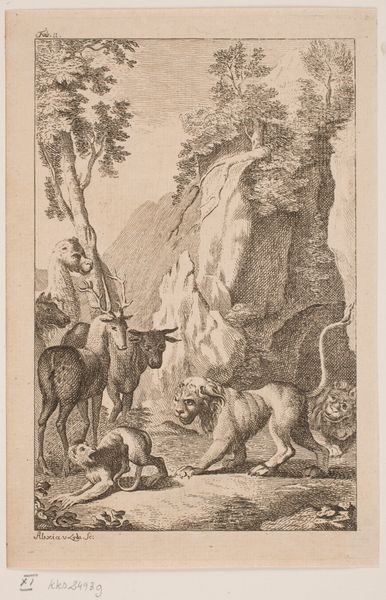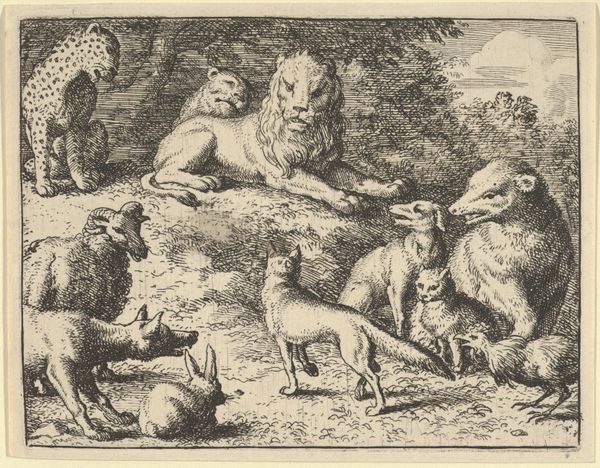
Renard Coninues his False Revelations from Hendrick van Alcmar's Renard The Fox 1650 - 1675
0:00
0:00
drawing, print, engraving
#
drawing
#
animal
#
dutch-golden-age
# print
#
landscape
#
figuration
#
engraving
Dimensions: Plate: 3 3/4 × 4 9/16 in. (9.6 × 11.6 cm) Sheet: 4 in. × 4 13/16 in. (10.2 × 12.2 cm)
Copyright: Public Domain
Editor: So, here we have Allart van Everdingen's "Renard Continues his False Revelations from Hendrick van Alcmar's Renard The Fox", dating roughly between 1650 and 1675. It’s an engraving, currently housed at The Met. It strikes me as quite a whimsical scene. What layers do you see beneath the surface, particularly considering its historical context? Curator: The choice to depict scenes from *Renard the Fox* speaks volumes about the social climate of the Dutch Golden Age. Animal fables like these were often used as veiled critiques of power structures and social hierarchies. Do you notice how each animal, despite its natural characteristics, seems to represent specific human types or roles within society? Editor: I suppose the lion is symbolic of royalty and authority... and Renard, being the fox, is obviously cunning and sly? Curator: Exactly. Think about the audiences for these kinds of prints. They weren't just consuming an amusing animal story. They were engaging with commentary on contemporary society and potentially even resistance towards it. These prints allowed for discussions of political maneuvering, social injustice, and the role of the individual within a larger system in a light-hearted way. What does the monkey's body language tell you about the political statement made in this image? Editor: The monkey is turned away with their head in their hand, which indicates they feel ashamed. The political statement the engraving may make, is about leaders embarrassing others? Curator: It may indeed. Consider, too, that printmaking made art more accessible to a wider public, democratizing access to imagery and ideas that would have once been limited to the wealthy elite. That act, in itself, changed art's social and political influence. Editor: That’s a really insightful point. It makes you consider how art influences political awareness among ordinary people and is much more intricate. Curator: Indeed. And by examining works like this within their historical and social contexts, we can start to unravel how images shape culture, and vice versa.
Comments
No comments
Be the first to comment and join the conversation on the ultimate creative platform.
